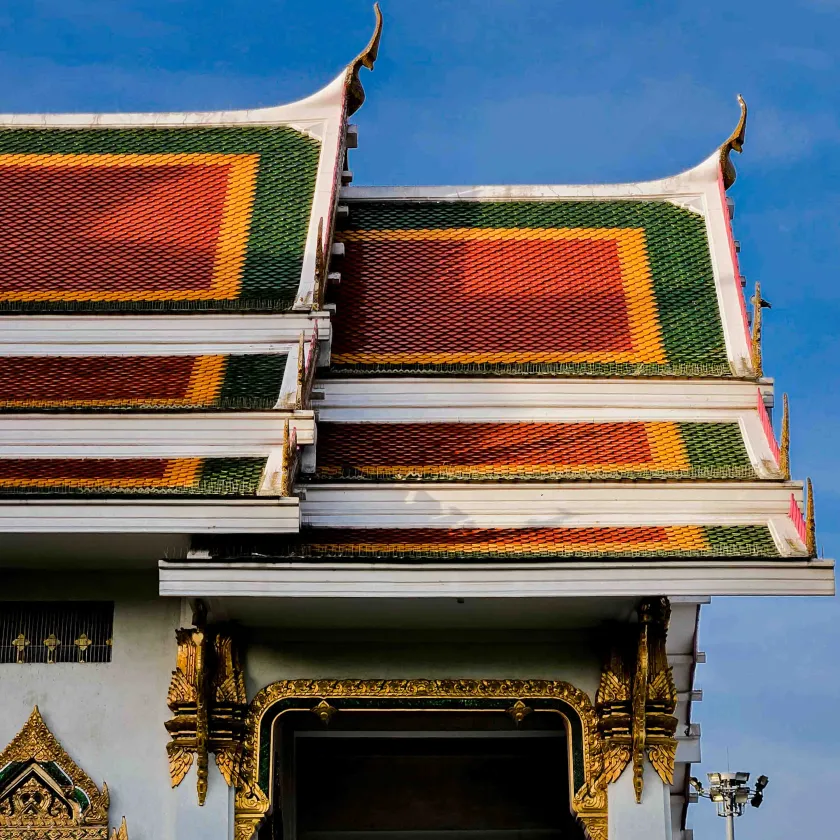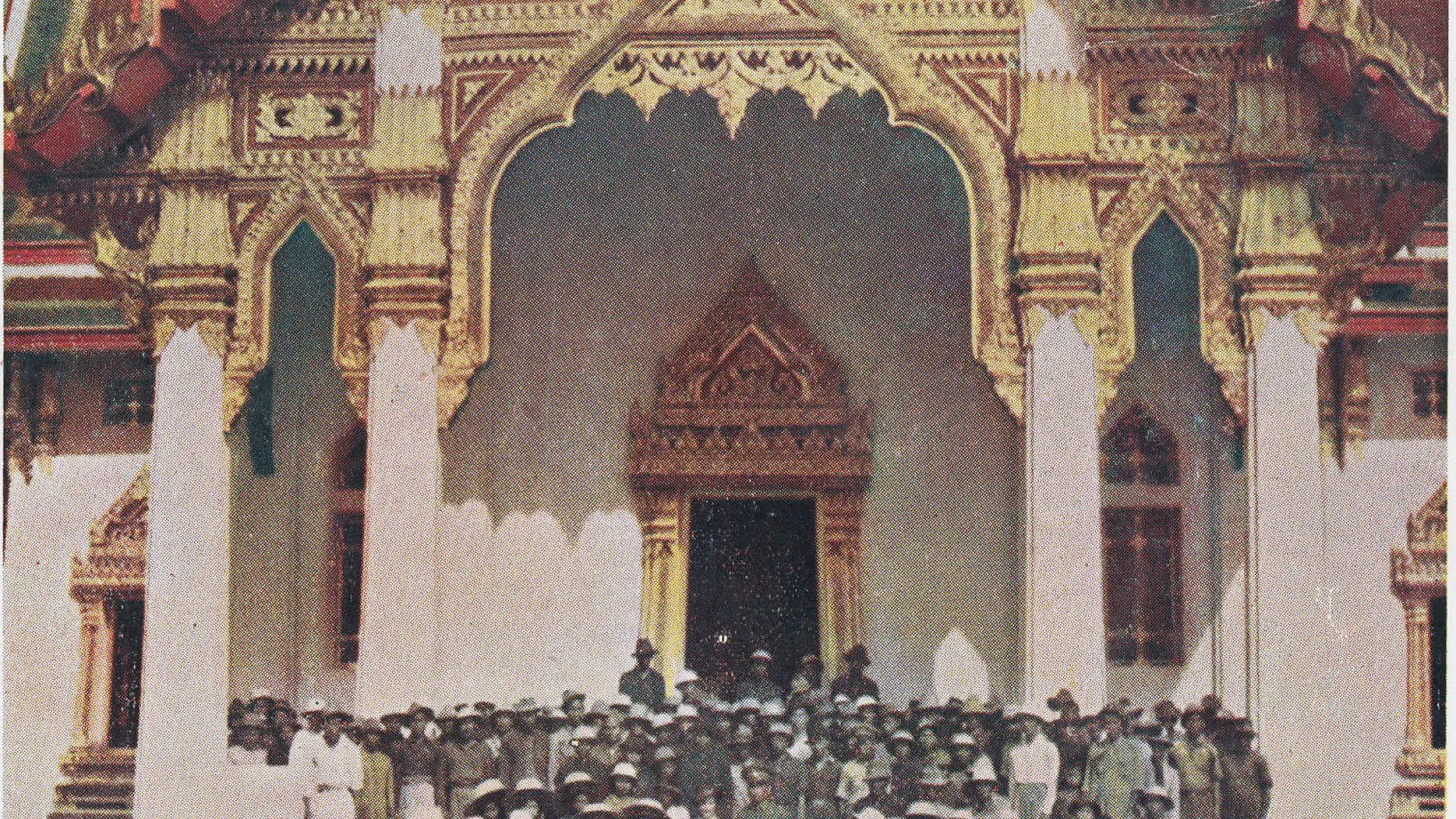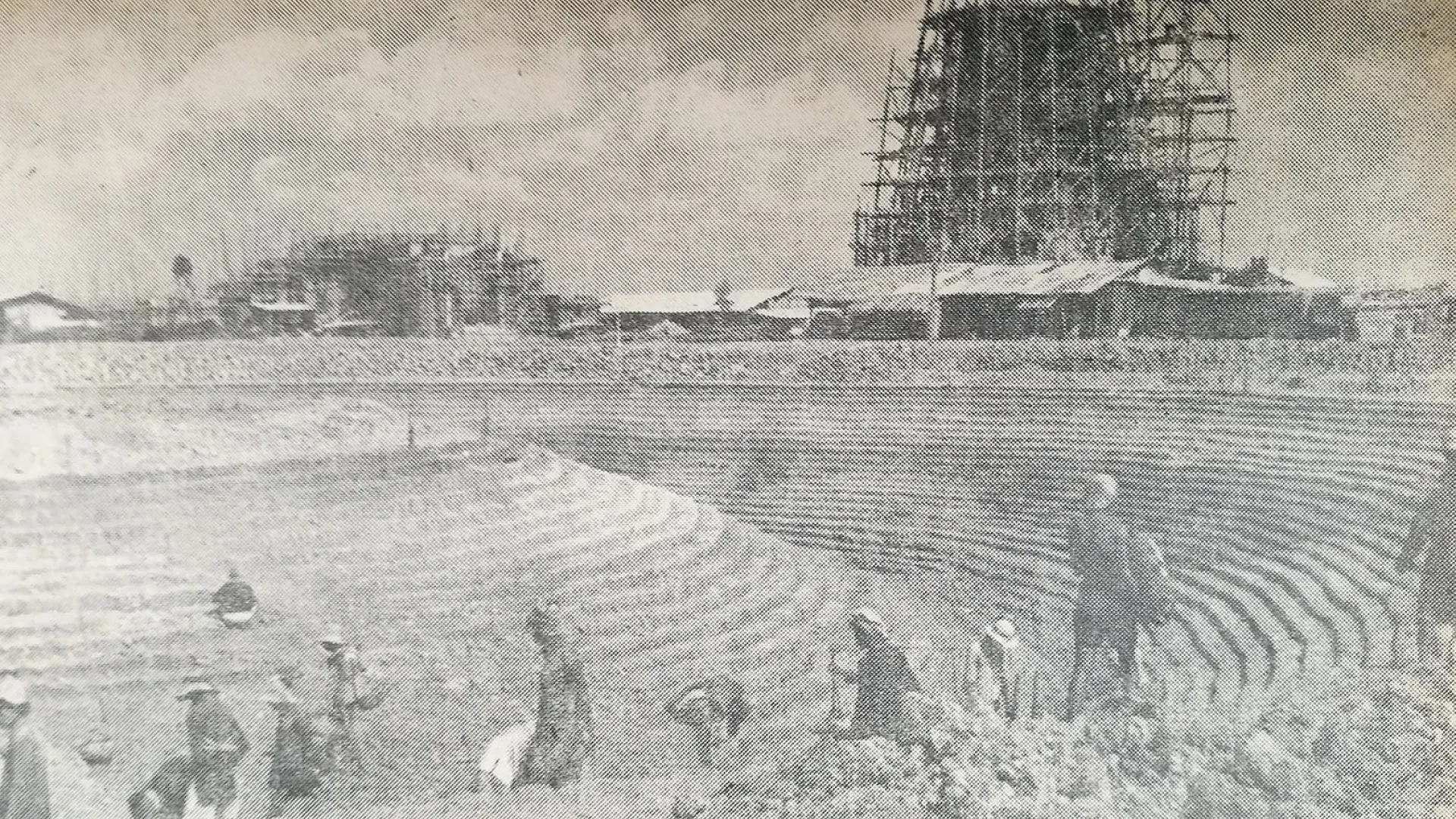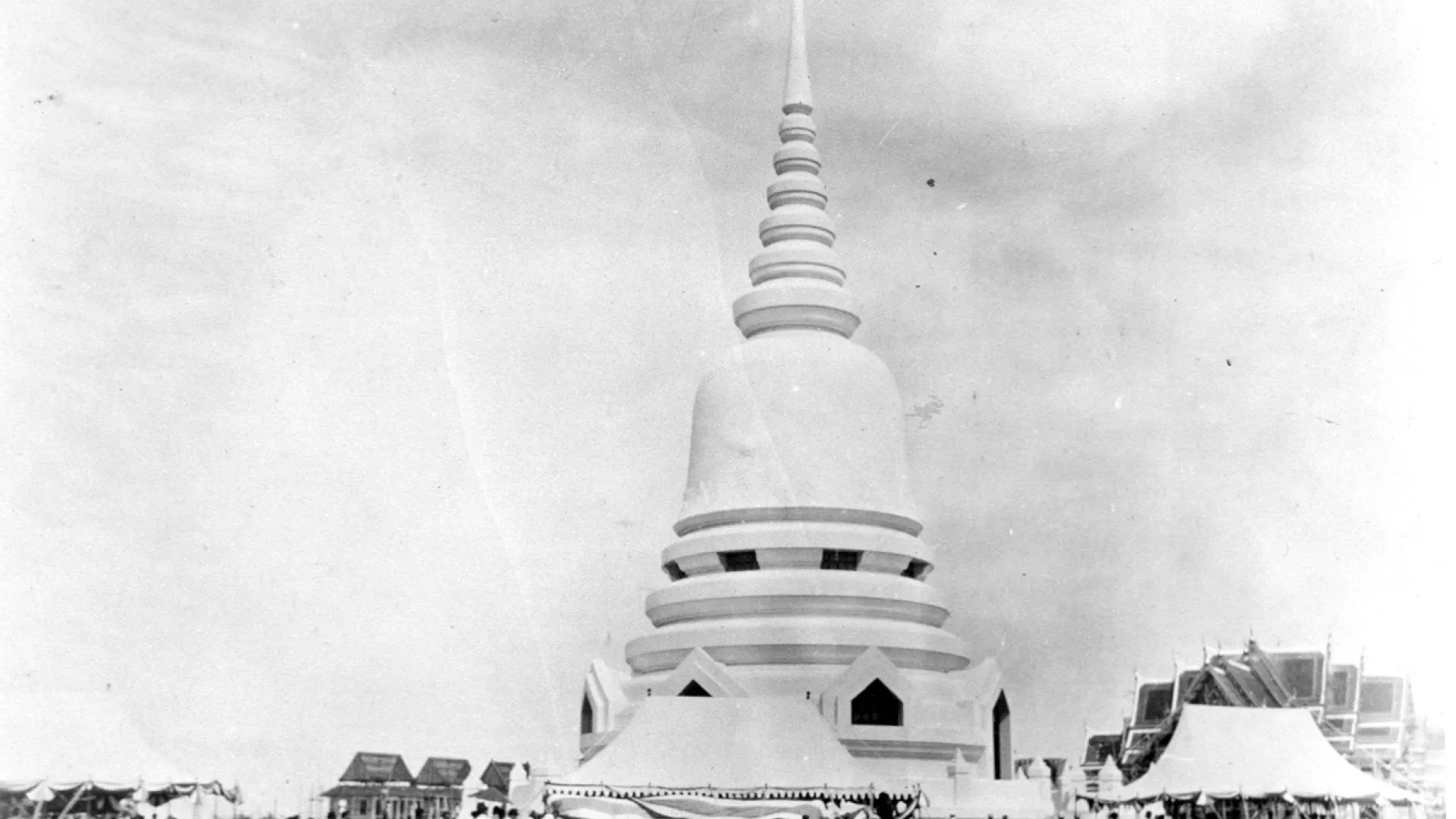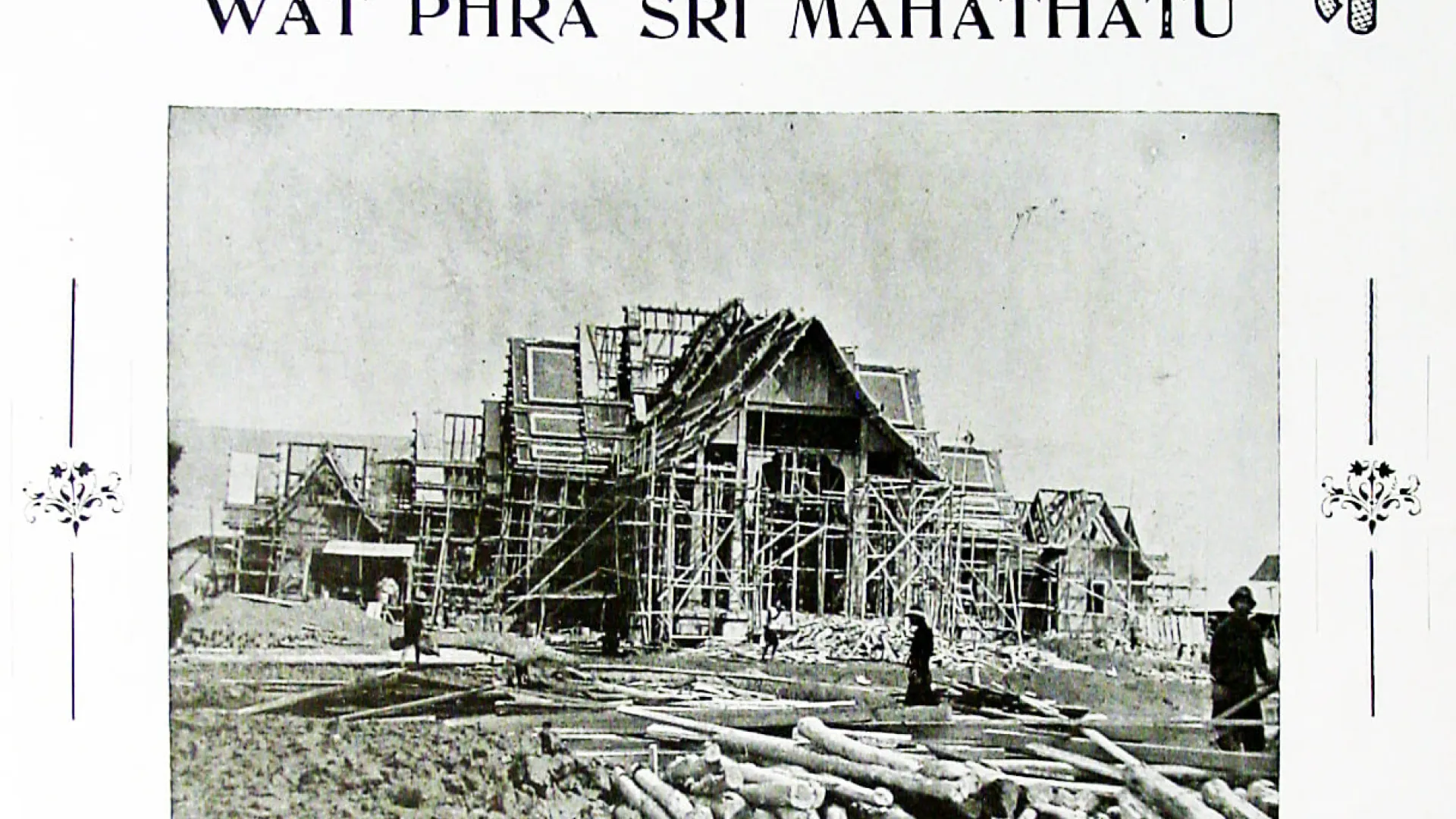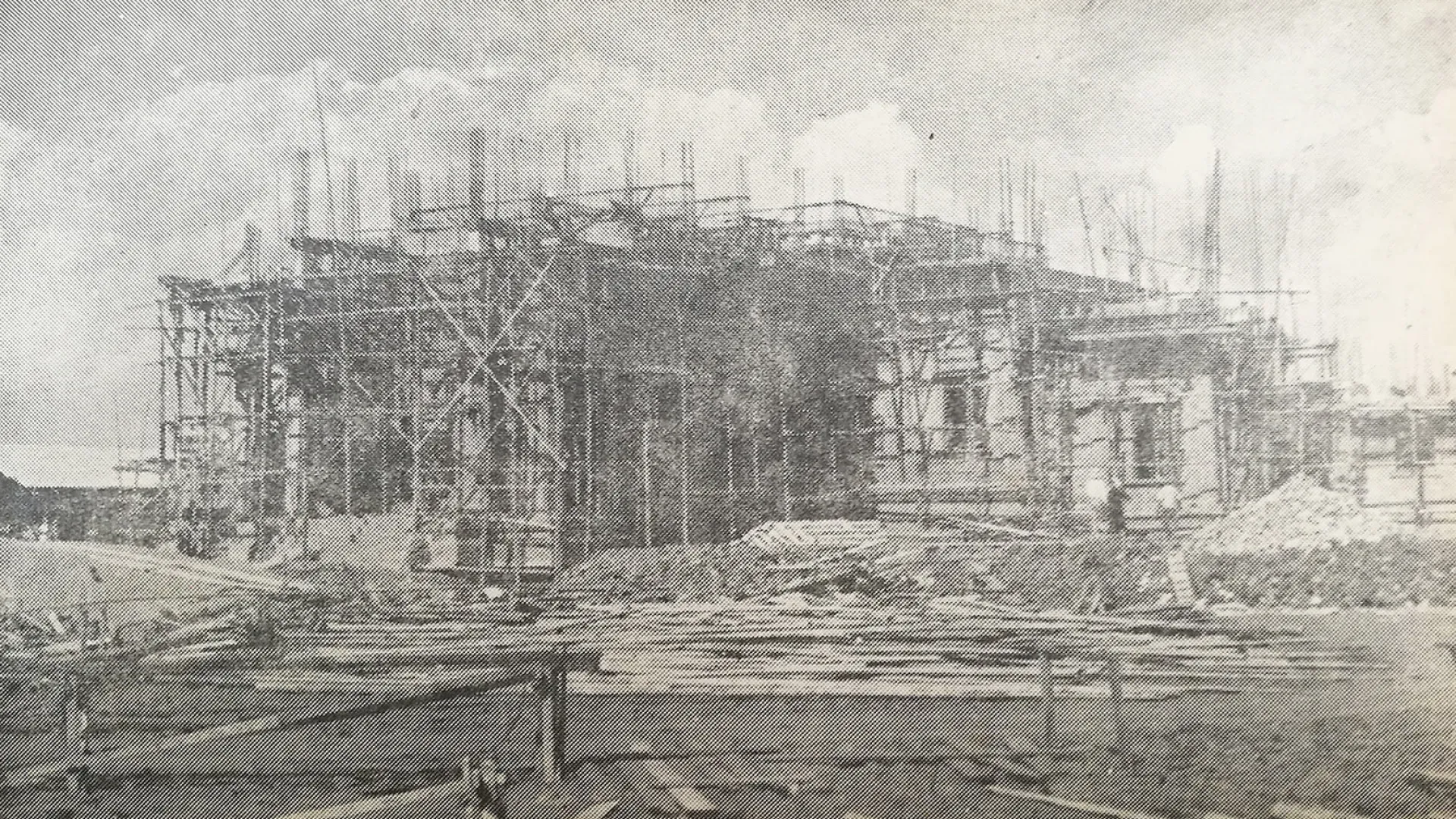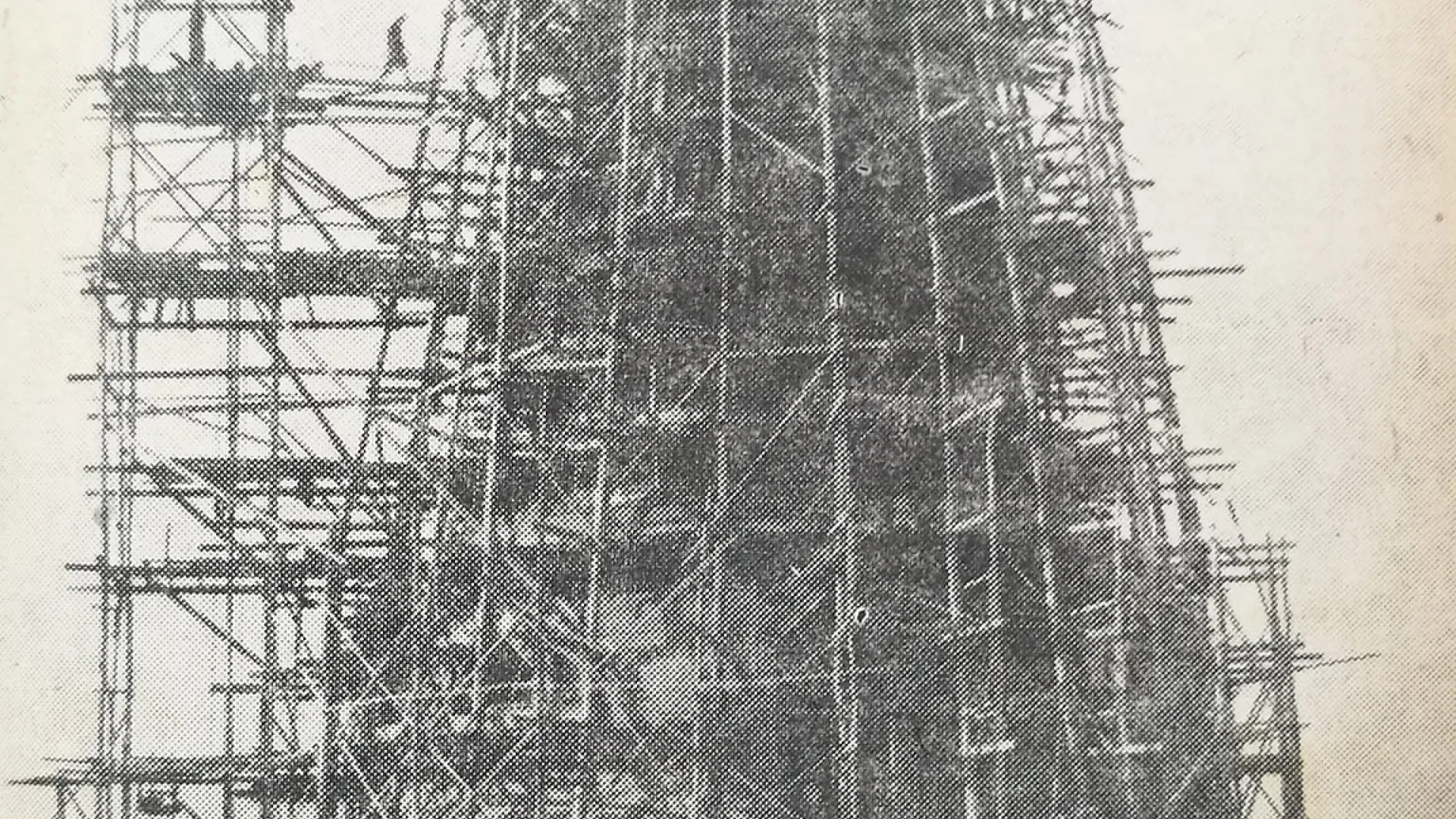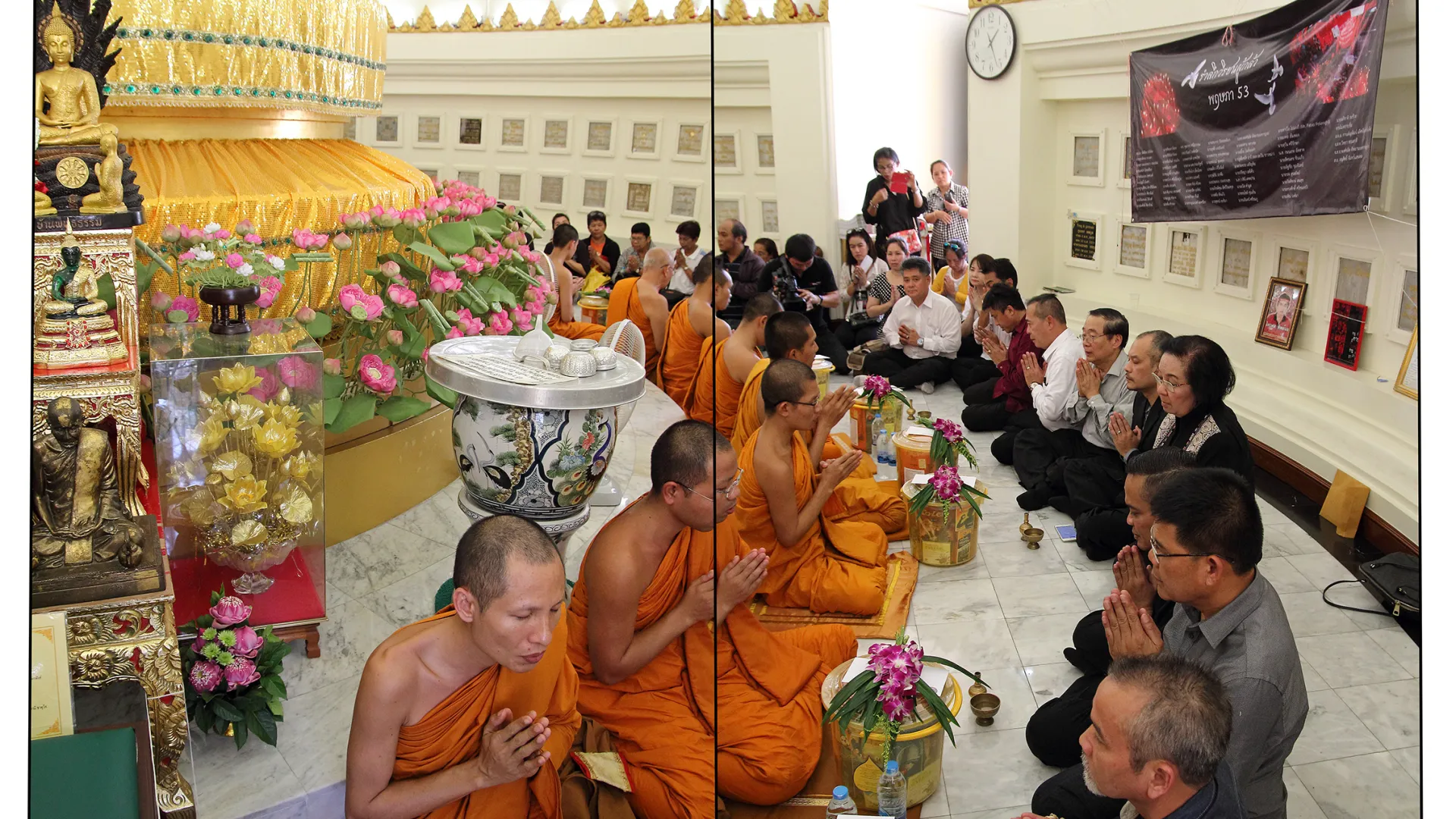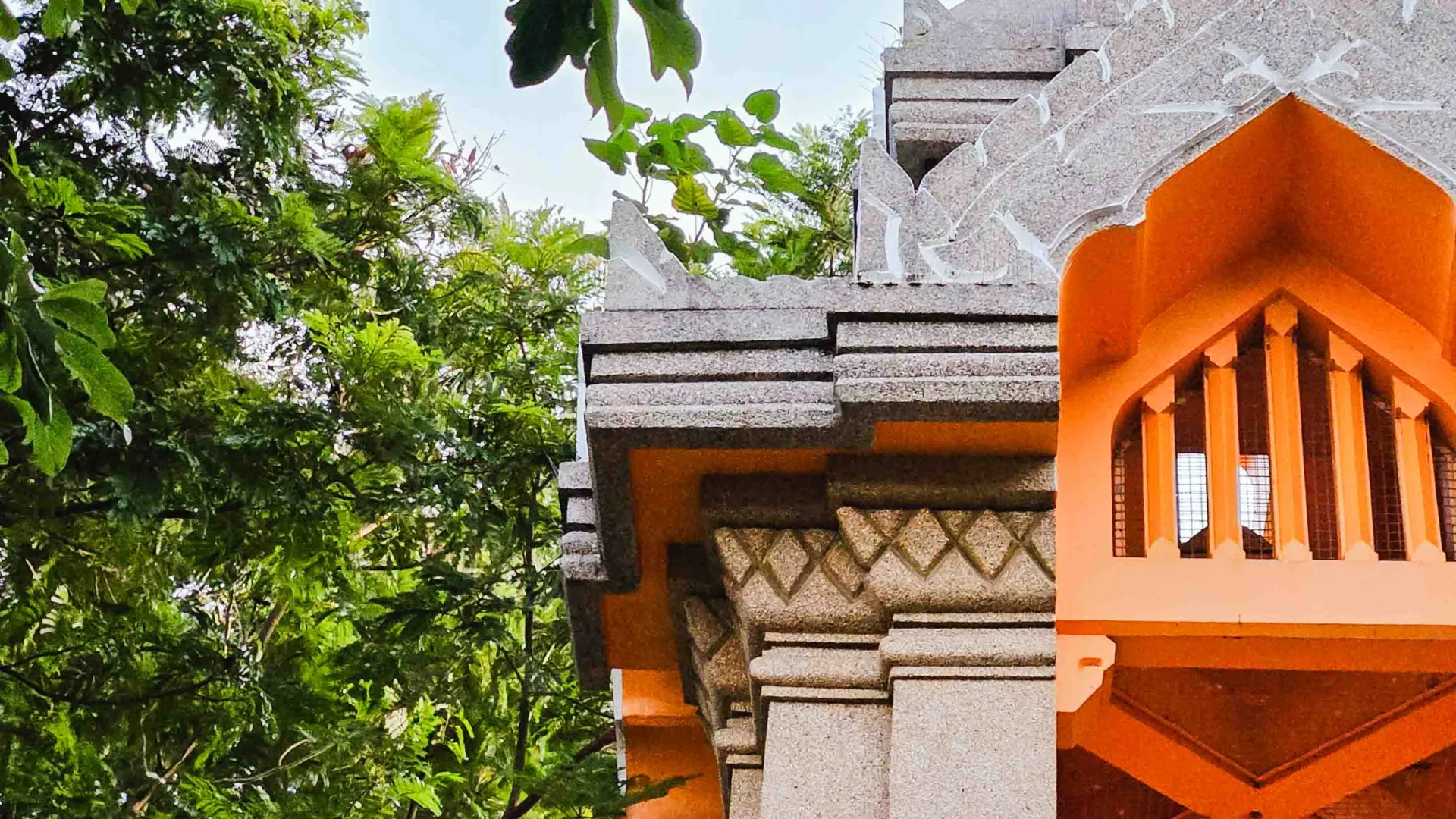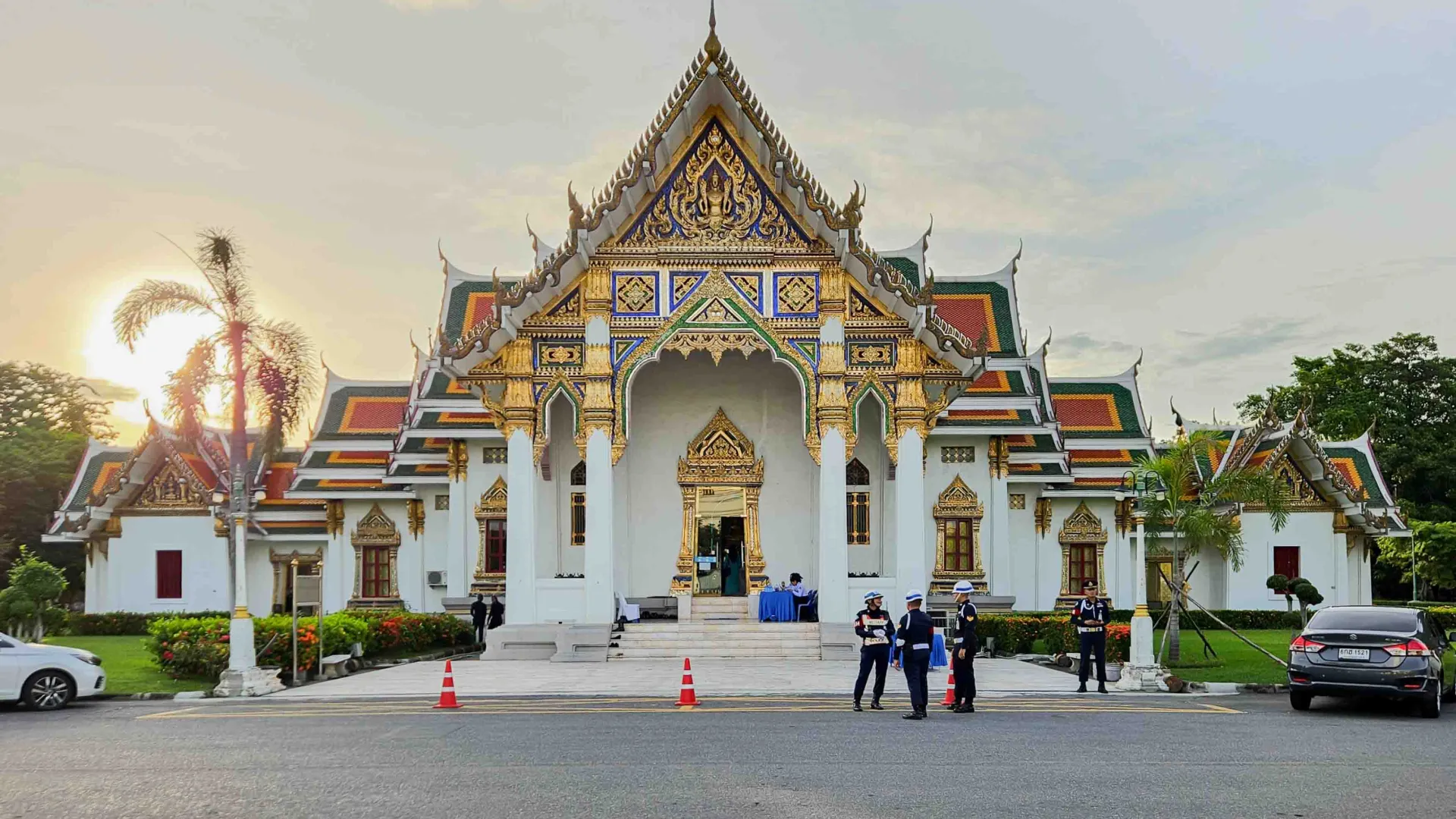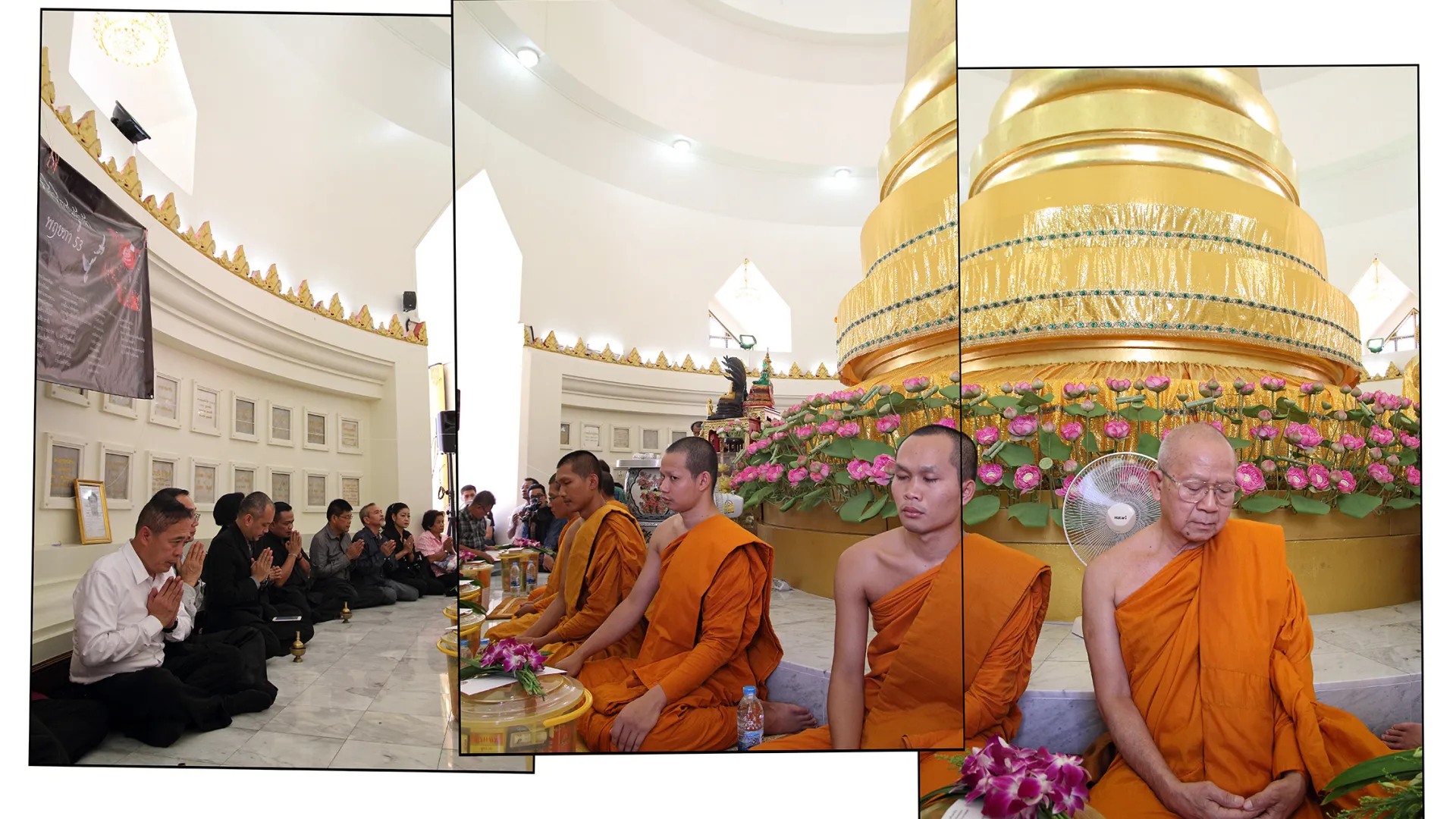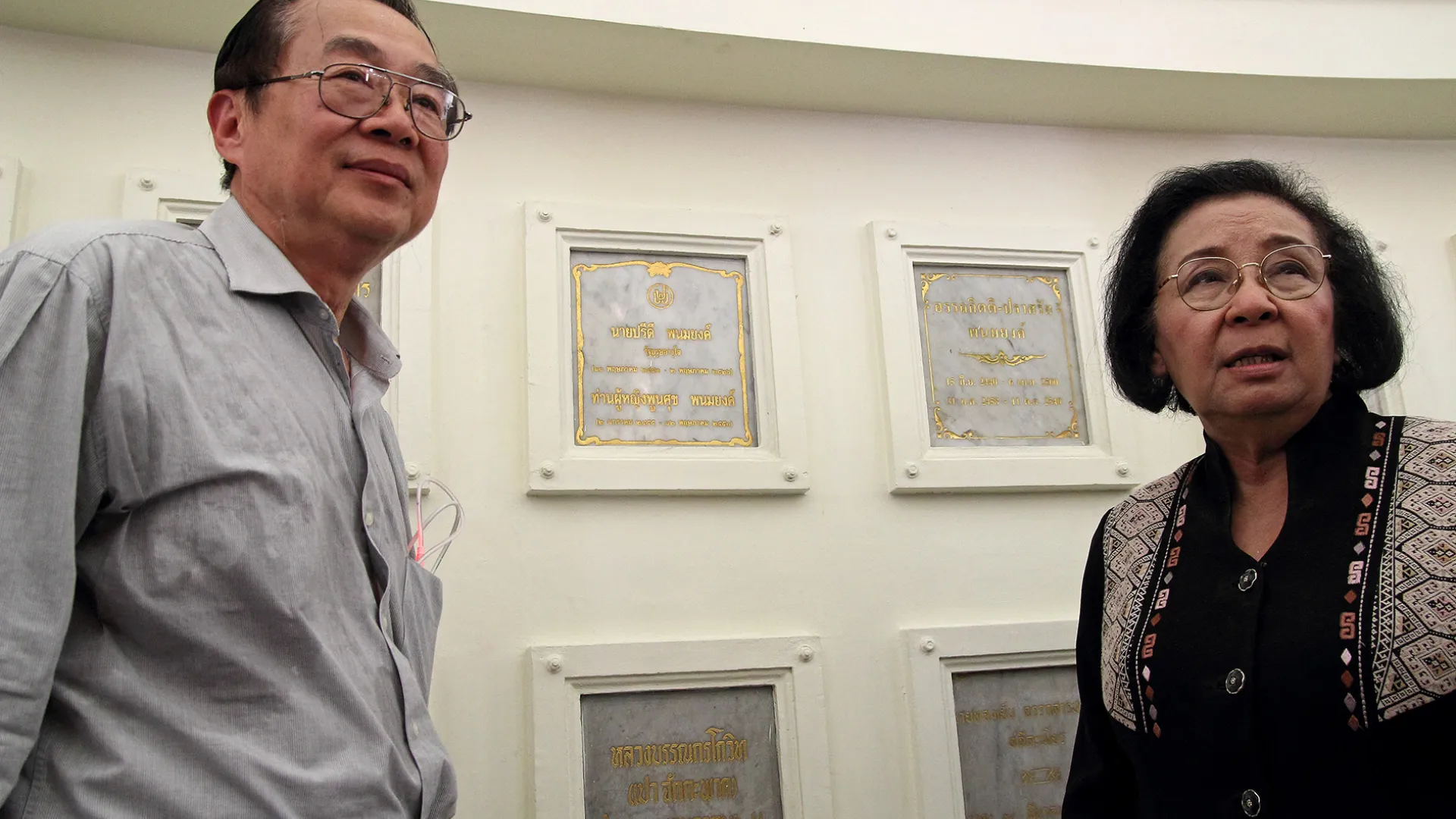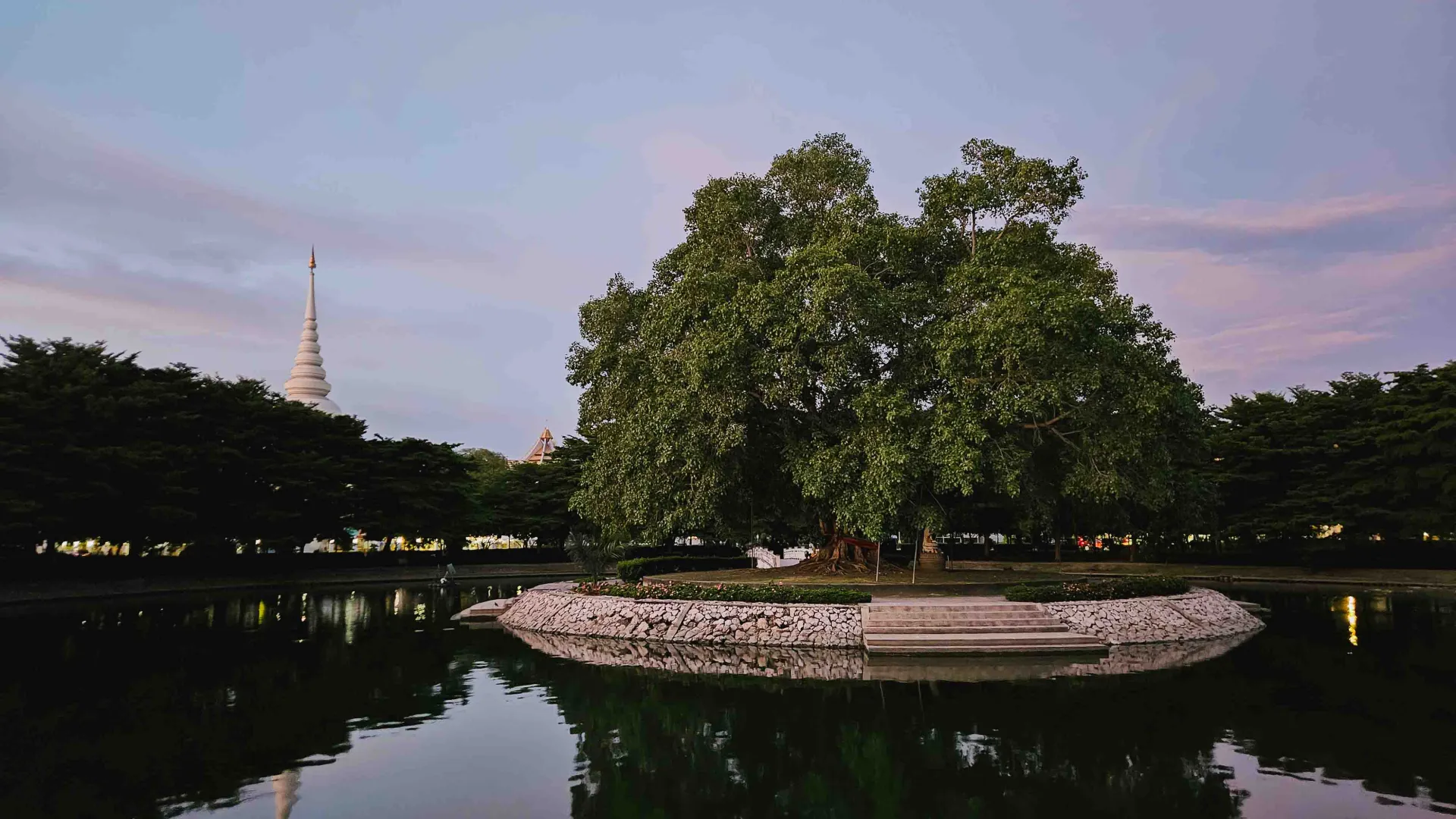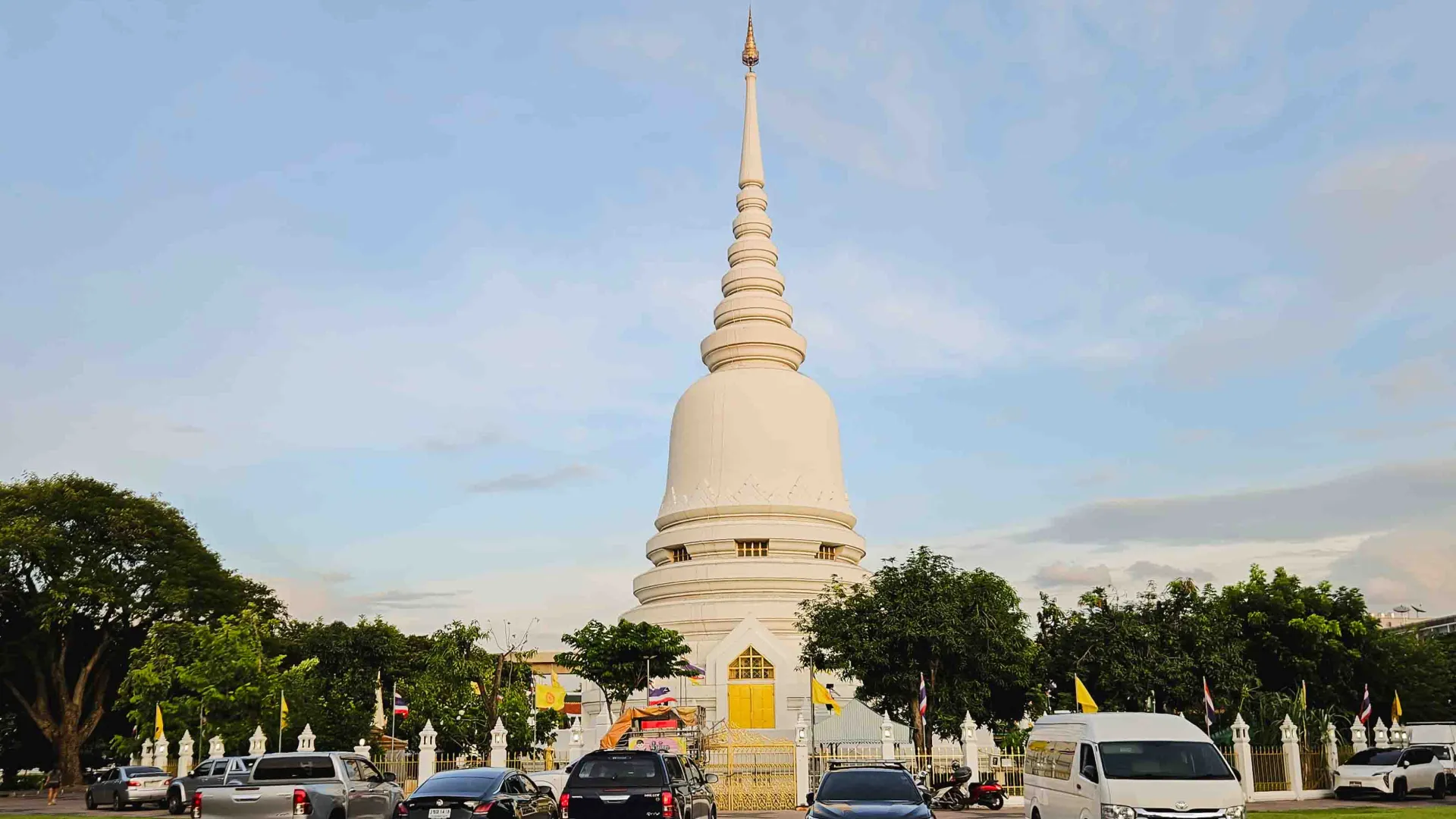The overthrow of absolute rule by the People's Party in the October 1933 Boworadet Rebellion marked a dramatic shift in Thai history. This momentous victory spurred the creation of significant structures that not only commemorated the event but also embodied the new era's ideals of equality. One such structure is the Constitutional Defense Monument (Rebellion Suppression Monument) located at the Bang Khen district in Bangkok. Erected in 1936, as well as the Thao Suranari Monument built in 1933, just a year after the rebellion. Standing out as a unique testament to the party's ideology is Wat Prachathipatai, the only temple they constructed. The temple's architecture is a notable departure from traditional styles, standing as enduring symbols of the People's Party's victory and their commitment to establishing a new political and social order.
The Temple of Democracy was constructed between 1940 to 1942, not far from the site of the Constitutional Defense Monument. The People’s Party commissioned the monument to become a symbol of the new regime, serving as a counterpart to Wat Mahathat, established during the Ayutthaya Kingdom, which housed the Maha Dhatu relic under traditional beliefs. The temple would ultimately be renamed as Wat Phra Sri Mahathat after Luang Thamrong Navaswadhi brought the cremated ashes of Buddha and a sacred fig tree from India to be housed at the temple. The significance of Wat Prachathipatai was further underscored by the ordination of Field Marshal Plaek Phibunsongkhram, the leader of the 1932 Revolution, as the first monk at the temple. To emphasize the temple's national importance, the Phra Phutthasihing Buddha statue, the third most revered in Thailand after the Emerald Buddha and Phra Phuttha Chinnarat, was enshrined in the ubosot (ordination hall). Additionally, the People's Party aimed for Wat Prachathipatai to serve as a bridge to reconcile the Mahanikai and Dhammayuttika sects of Thai Buddhism by bringing them together under one roof. However, this endeavor proved unsuccessful.
The temple's architecture, designed by Phra Phromphichet, showcases a unique blend of traditional and modern elements. While the ubosot draws inspiration from Wat Benchamabophit, it also exhibits distinct characteristics, particularly the use of reinforced concrete in Thai architecture, giving rise to the term "Thai architecture in concrete." The pediment features the "Arun Thepphabut'' motif, an unprecedented design in Thai temples. Some believe this motif represents an attempt to break free from associations with royal symbolism, typically depicted as Narayana riding Garuda, Indra riding Erawan, higher deities, or royal emblems. The "Arun Theppabut'' motif also adorns the entrance of the Democracy Monument. The temple's stupa, too, reflects a modern approach, inspired by the Panthéon in France. The bell-shaped stupa sheds traditional ornamentation, while the six-tiered lotus bud atop the stupa is likely a symbolic representation of the People's Party's six principles.
Besides reflecting a new aesthetic sensibility in Thai architecture, the Cetiya of Wat Phra Si Mahathat also houses the ashes of nearly all the members of the People's Party. This is a new development, as it is the first time that the ashes of commoners have been enshrined alongside relics of the Buddha (even the ashes of kings have never been enshrined with relics before). This reflects a changing consciousness due to the influence of the concept of "equality" replacing the old hierarchical consciousness. Therefore, it can be said that Wat Phra Si Mahathat is one of the first temples to have changed the hierarchical system in Thai architecture and has had a lasting influence to this day.
However, despite its important role in the early days, after 1947, the temple seems to have faded from public memory, remembered only as the site of the Air Force crematorium. However, as the temple is the final resting place of important figures of the People's Party, their descendants often come to commemorate them on June 24th of each year. And after the 2006 coup, when the Red Shirts tried to revive the People’s Party's history of fighting for democracy, Wat Phra Si Mahathat was once again raised as a symbol and venue for democratic activities alongside the Rebellion Suppression Monument (which has since been demolished). This continues into the current era of people's revival of the People's Party's role.
Photographs
Period 1 The Birth of Khana Ratsadon Objects1932-1947
Period 4 The Third Rebirth of Khana Ratsadon2014-Present
Video Clips
Coordinates
วัดพระศรีมหาธาตุ วรมหาวิหาร
เลขที่ 140 ถนนพหลโยธิน แขวงอนุสาวรีย์ เขตบางเขน กรุงเทพมหานคร 10220
